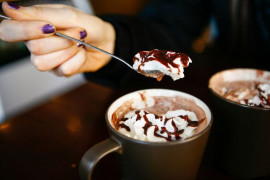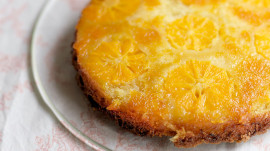
For years, we've believed we like chocolate because of the way it tastes. But, it appears there's a whole science behind why we like to eat it - and it's related to a fat/carbohydrates balance that is set right from the very beginning of our lives. As part of a new series on the science of food, botanist James Wong and Dr Michael Mosley went in search of answers.
Chocolate is produced using cocoa beans which have been grown and consumed for thousands of years. A drink was initially made by the Maya and Aztecs called xocolatl, which means "bitter water," owing to the bitter taste of cocoa in its raw form.
Nestle touts new technology to reduce sugar in chocolate
A thick husk of the cocoa pod must first be cracked open to retrieve the cocoa beans. While doing so, pulp with an intense tropical flavour is released. The beans and the pulp are then allowed to sweat and ferment for several days before they are dried and roasted.
During the process of roasting the beans, a range of chemical compounds are released which when combined with other aroma molecules creates a unique chemical signature that our brains love.
Chocolate also contains a number of psychoactive chemicals including anandamide, a neurotransmitter whose name is derived from the Sanskrit - "ananda", meaning "joy, bliss, delight". Anandamides stimulate the brain in much the same way that cannabis does. Further, it also contains tyramine and phenylethylamine, both of which have near enough the same effects as amphetamines.
Finally, small traces of theobromine and caffeine are also found in chocolate. Both these substances are well-known stimulants. Although scientists have been pleased with the discovery, it is worth noting that only traces of these substances are present in chocolate.
So while your brain will not get much of a chemical rush from eating a few squares of chocolate, they may play a small part in tantalising your taste buds and seducing our senses.
Mars, Snickers chocolate bars recalled from 55 countries
Although these substances play a role in our love for chocolate, its texture and creamy viscosity also have a role to play. Without biting a piece of chocolate, you will notice how it rapidly melts on your tongue, leaving a lingering sensation of smoothness. Touch receptors present on our tongues are able to detect the textural change, which then stimulate feelings of pleasure.
Come to think of it, the real thing that transformed cocoa from a bitter drink to the snack loved worldwide today was the addition of fat and sugar. Adding just the right amount of each, usually 20-25% fat and 40-50% sugar, is crucial for the perfect tasting chocolate.
Although you can get lots of natural sugar from fruits, it is very rare for such high levels of fat and sugar to be found together in nature. One of the few places where you will find both together is in milk. Human breast milk is particularly rich in natural sugars, mainly lactose. Approximately 4% of human breast milk is fat, while about 8% is made up of sugars. Similarly, formula milk contains a similar ratio of fats to sugars.
So while there's a whole host of reasons we love chocolate, it may be because we are trying to recapture the taste and sense of closeness we got from the food we tasted before anything else; human breast milk.
This article originally appeared on BBC















































COMMENTS
Comments are moderated and generally will be posted if they are on-topic and not abusive.
For more information, please see our Comments FAQ